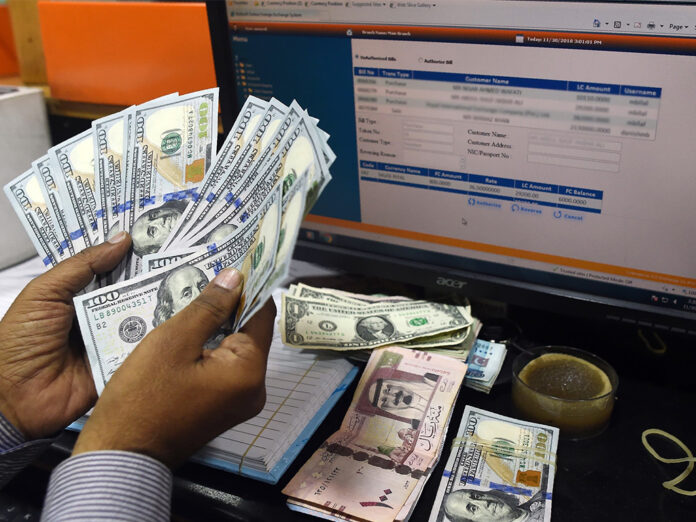Pakistan is expected to receive record remittance inflows of up to $28 billion this year, as initiatives launched by the government and central bank to facilitate overseas workers have started yielding positive results despite challenges posed by the Covid-19 pandemic.
Overseas Pakistanis residing in Gulf states in general, and the UAE and Saudi Arabia in particular, are likely to maintain an upward momentum in remittances, a report published in Khaleej Times read. They contributed 60.14 per cent of the total inflows during the July-December 2020 period.
Pakistan received $14.203 billion remittances during the first half of the financial year 2020-21, against $11.37 billion in the same period last year — a strong growth of 24.9 per cent. This is the highest half-yearly growth since financial year 2006-07.
“This strong growth in workers’ remittances is attributable to the increased use of formal channels on the back of sustained efforts by the government and State Bank of Pakistan to encourage inflows through official channels,” said the central bank in a statement.
As per the breakdown of remittances, overseas Pakistanis residing in the UAE remitted $2.96 billion during the July-December 2020 period, compared to $2.78 billion in the corresponding period last year — a growth of 6.5 per cent.
Workers residing in Dubai sent 5.6 per cent more money back home, as they remitted $2.45 billion during the first half of fiscal year 2020-21. Overseas Pakistanis in Abu Dhabi and Sharjah sent $418.4 million and $34.5 million in remittances, respectively, showing an increase of 5.6 per cent and one per cent.
Meanwhile, remittance inflows from Saudi Arabia also recorded a significant increase during the first half of fiscal year 2020-21. Overseas Pakistanis remitted $3.96 billion, compared to $3.17 billion in the corresponding period last year — a growth of 24.6pc.
“Workers residing in other GCC countries remitted $1.62 billion as against $1.52 billion in the same period last year, reflecting a growth of 6.6 per cent,” according to State Bank of Pakistan (SBP), the central bank.
In December, Pakistan received $2.4 billion remittances, compared to $2.1 billion in December 2019, showing an increase of 16.2pc.
This is the seventh month in a row that remittances crossed the $2 billion mark. It provides a new lifeline to a struggling Pakistan economy, which is expected to return to growth this year.
In addition to the Gulf region, remittance inflows from the United Kingdom rose to $1.88 billion from $1.23 billion in the same first-half period last year, recording a record growth of 51.7 per cent. Pakistanis residing in European Union states remitted $1.29 billion, showing a strong growth of 41.7 per cent.
Remittances from the United States also registered a growth of 47.5 per cent with $1.2 billion remitted during the July-December 2020 period, against $816.8 million remitted in the previous year.
Analysts said the country may receive record remittances of up to $28 billion if the similar upward growth trend continues in the second half ending on June 30, 2021. Pakistan received $23 billion in remittances during the financial year 2019-20.
“Interestingly, the government’s full year target is $21 billion while the central bank expects remittance inflows ranging between $24 billion to $26 billion. The current run rate indicates that inflows may hit $28.4 billion,” said Muzammil Aslam, chief executive at Tangent Capital Advisors.
“Tangent Capital expects low travelling volumes, improved product profiles including introduction of Roshan Digital, and more digitisation will keep remittances to robust this year,” he added.





We are pleased with the extra ordinary performance of OPs brothers
Increase in remittances is due to people not able to travel due COVID-19 restrictions. This money was normally carried by people in their pockets when they used to travel for vacations and also were sending through friends. This has been the primary driver and seems the reported of the article has deliberately not mentioned this.